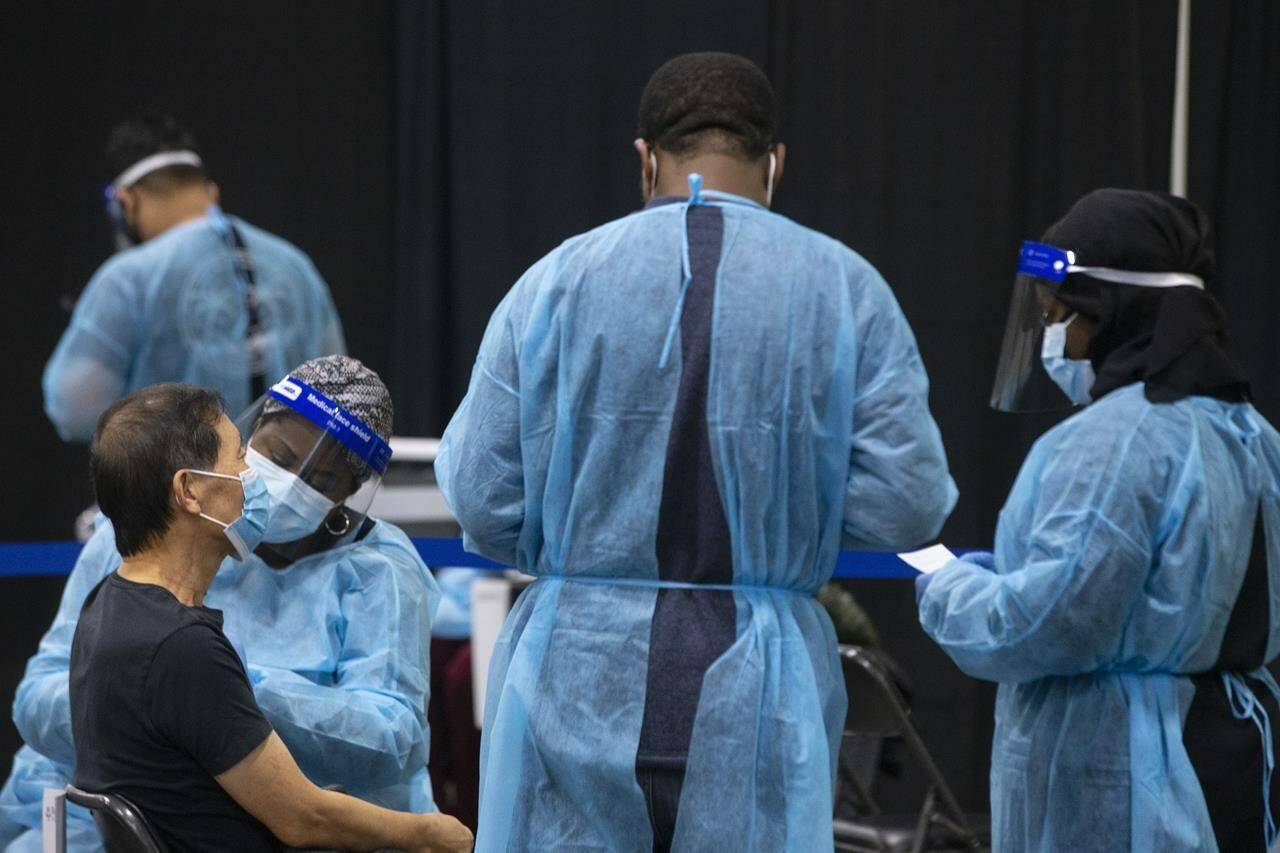Several parts of Canada ushered in 2022 by documenting record-setting COVID-19 case counts after a quiet New Year’s Eve dampened by tightened public health restrictions and fears of getting sick in the latest wave of the pandemic.
Quebec, Ontario and Newfoundland and Labrador all logged new peaks in their daily COVID-19 counts, in some cases continuing a streak of rapid infection growth and toppling previous records set just 24 hours earlier.
Health officials in Quebec reported 17,122 new COVID-19 cases on New Year’s Day, marking the fifth straight day that a record number of new infections have been reported in the province. It also recorded 12 more deaths linked to COVID-19 and 98 more people in hospital, for a total of 1,161 patients.
Quebec residents rang in the new year under a newly instituted, provincewide curfew. The rules took effect Friday and required everyone to be home by 10 p.m., and to stay there until 5 a.m.
The Canadian Civil Liberties Association condemned the new measures, saying the government has presented no evidence that a curfew will work to slow the spread of COVID-19.
“A curfew is particularly problematic because it purports to empower police officers to stop and question individuals simply for being outdoors at certain times of day,” Cara Zwibel, the association’s director of fundamental freedoms and acting general counsel, said in a statement Friday evening. “The burden of these police stops is likely to fall disproportionately on racialized individuals and other marginalized groups.”
Quebec is the only province in Canada to use a curfew as part of its efforts to control the spread of COVID-19.
In Ontario, meanwhile, public health officials reported a staggering 18,445 new cases Saturday, trouncing Friday’s record-setting tally of 16,713 new diagnoses. Ontario is one of several jurisdictions to have changed its availability of polymerase chain reaction testing for COVID-19 and as a result, public health warned that Saturday’s figures represent an “underestimate.”
Twelve more Ontarians died because of COVID-19 since Friday, and 85 more people are now in hospital, according to data released by Public Health Ontario. The data did not include the total number of hospitalizations.
Dr. Kevin Smith, president and CEO of the province’s University Health Network, tweeted Saturday about “the rapid and concerning growth” of hospitalizations. Tagging Health Canada, Smith asked how he could help get Paxlovid, Pfizer’s antiviral COVID-19 pills, “immediately” approved “for emergency use.”
“We need this powerful tool in our arsenal yesterday,” he tweeted
The trappings of pandemic-era new year’s festivities were evident throughout the country, but were particularly striking in Canada’s eastern-most province.
Newfoundland and Labrador is the first province in Canada to ring in the new year and in normal times, revelers are sure to find a rambunctious New Year’s Eve crowd on George Street, an infamous strip of bars in downtown St. John’s.
But on Friday night, the cobblestone strip was deserted; bars and lounges in the province were closed on Dec. 23 as the Omicron variant of COVID-19 drove case counts upward.
The province reported a record-breaking 442 new infections Saturday — more than four times the peak amount reported during a Delta variant outbreak in February that sidelined the provincial election. Health Minister John Haggie announced in a Facebook post that he was among those who’d tested positive for COVID-19, and that he is isolating at home.
“I know there are many families in the same situation and we will get through this,” Haggie wrote in his post.
There are 2,150 active reported COVID-19 cases in Newfoundland and Labrador, but only one person is hospitalized, officials said in a statement on Twitter.
Officials in Nunavut reported 50 new cases, including two new infections in the community of Chesterfield Inlet. The territory is now battling confirmed COVID-19 infections in 10 of its communities and waiting for testing to confirm infections in one more, a government press release said Saturday.
“This outbreak of COVID-19 is spreading more quickly and easily than any others we’ve experienced,” Dr. Michael Patterson, Nunavut’s chief public health officer said in the release. “Nunavummiut need to prepare for surges in case numbers and infections in every community.”
Earlier this week, Patterson extended a territory-wide “circuit-breaker” lockdown as the spread of COVID-19 infections pushes Nunavut’s health-care system to a breaking point.
Manitobans began the new year with new isolation rules in effect, requiring fully-vaccinated residents who test positive for COVID-19 to quarantine for five days instead of 10, even if their results came from a rapid antigen test.
Those who are not fully immunized must isolate for 10 days.
– With files from Jacob Serebrin in Montreal
Sarah Smellie, The Canadian Press

